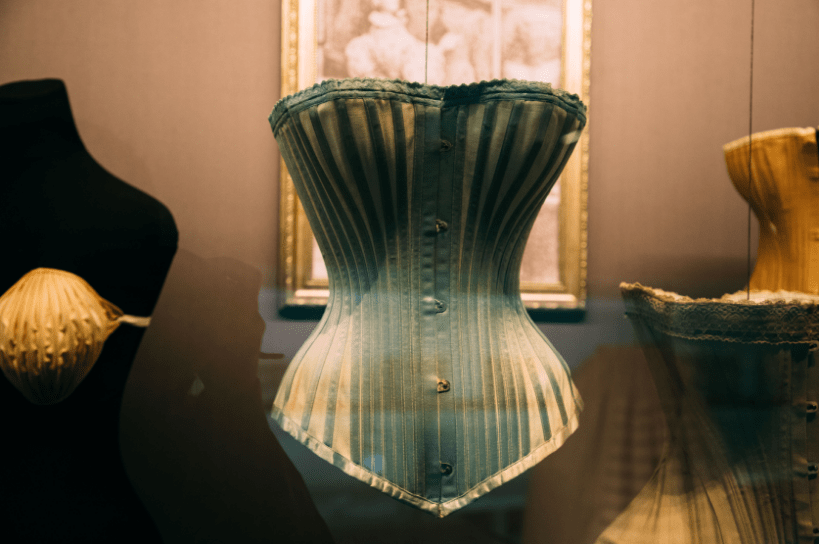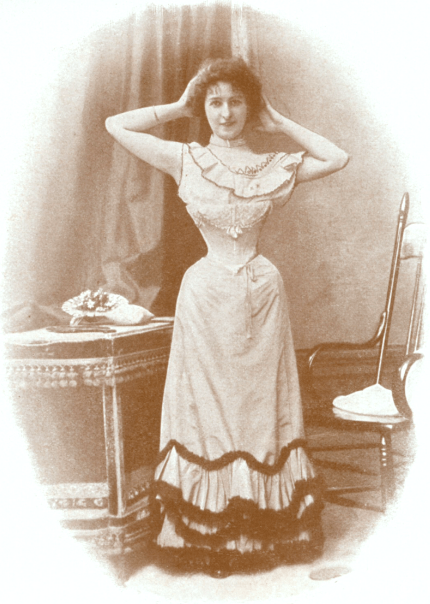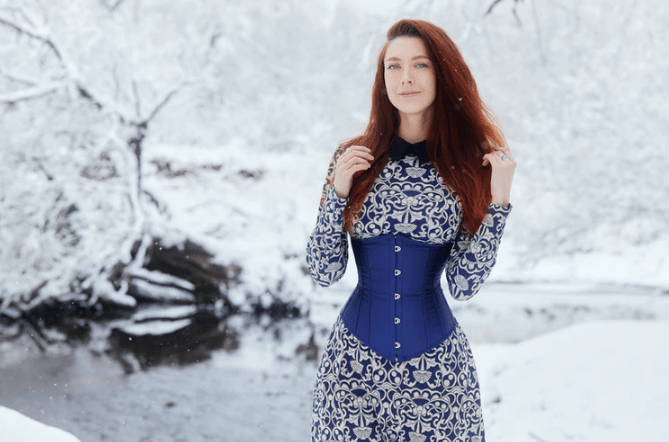Among the ancient clothing items, the corset is one of the few that has survived and is still worn today by a lot of women. In fact, it was named one of the biggest fashion trends in 2019. And recently, period dramas like ITV’s Downton Abbey and Netflix’s Bridgerton have even fueled the resurrection of the corset’s popularity
Of course, you know what corsets are for, right? They were invented to produce the hourglass silhouette that many women so desired. And that hasn’t changed. Women still wear corsets as a shortcut (yet short-term method, too) to achieve a slimmer waistline, wider hips, and fuller-looking breasts. And they do produce the desired effect — but is it a good thing or a bad thing?
The popularity of the corset is persisting but also complicated and pretty controversial. Recently, according to social shopping sites such as Like to Know It and Lyst, online searches for corsets have gone on the upswing by more than 100% since Bridgerton aired on Christmas Day, 2020. Preferring physical beauty over physical comfort, more and more women wear this restrictive piece of clothing to create a flattering figure. Even some men wear it, too, to achieve a leaner body.
A history of the corset
Corsets — in the Western world, at least – were first worn as early as the 15th century. The “cotte” – a tight-fitting garment whose name means “on the rib,” was first worn in France during this era. The wealthy French women were known to desire a thinner waistline. They started to use stiffened linen undergarments with front or back laces that tightened the body. These undergarments were known as “stays” or bodices. These stays were originally made of whalebone, and later steel, encircling the ribs and compressing the natural size of the waist.
But that was not even the earliest recorded instance where a corset was made and worn. Similar garments can be traced back as far back as 1600 B.C. What started as a close-fitting sleeveless bodice evolved into an undergarment.
Over the years, the shape of the corset has continued to evolve, shifting from longer varieties that cover the hips to shorter ones that focus on the waistline.
Corsets helped shape the body into distinctive shapes. The corsets that produced the desired “hourglass” figure became one of the major fashion trends of the 1800s. The later variations with the “S” figure became popular in the 1900s.
Discussions and concerns about corsets being detrimental to women’s health started to surface during the 19th century, where the popularity of corsets was at its peak. At first, corsets were worn only by upper- and middle-class women. But as corsets became more available at various price points, working women now could afford to wear them, too.
Many doctors blamed the corset, especially when worn over a prolonged period, for the deformity of the ribs, respiratory diseases, damage to the lungs and other internal organs, miscarriages, and birth defects. Some doctors specifically cautioned against wearing too rigid corsets, while other doctors approved “moderate” or “health” corsets that were less tight and provided proper support to the body.
Some fashion historians argue that while some women wearing corsets may have suffered from weakened lungs, depleted lung volume, and erratic changes to breathing patterns, this would not have necessarily led to respiratory problems. Instead, they conclude that corsets may have caused women to faint and suffer from lowered vitality.
But throughout the 20th century, the popularity of the corsets experienced ebb and flow. The invention of elastic materials in the 1920s paved the way for newer and more flexible corsets, specifically made for women who were into sports or other types of active lifestyle. But as Coco Chanel’s loose-fitting garments became more popular, corsets went on their way out. But in the 1950s, corsets became “in” once again as women desired the nipped-waist effect popularized by Dior’s “New Look.”
But the resurgence was only fleeting, as the feminist movement in the 1960s through the 1970s saw corsets as unduly repressive. Besides, with the shifts towards sports and active lifestyle at the time, the corset was abandoned. Women’s focus on slimming their bodies went from the external to the internal. Rather than using the restrictive undergarment, women turned to diet, exercise, and plastic surgery to trim their waists and shape their bodies.
But if you believe that diet, exercise, plastic surgery, and other slimming methods would mean that corsets have phased out, think again! Today, corsets are still worn by many women to flatter their figure, albeit temporarily. The more rigid and severe ones are worn by fans who are taking part in fetishistic, burlesque, or cross-dressing practices or participating in period drama productions. While the corset is no longer an everyday piece of clothing for the average woman, its presence in the 21st century simply means one thing: they’ve never gone out of fashion.



